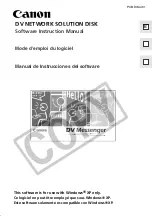
Node Status
EPICenter Reference Guide
457
Status is shown on the map through icons displayed for each device node as follows:
Node Reachability
(shown for all devices):
■
A green triangle: the device is up and is reachable via SNMP
■
A red X: the device is not reachable via SNMP (EPICenter cannot retrieve device status.
Note that if a device is not reachable, status for other items such as alarms or domain status may
be out of date.
Node Alarm status
(shown for all devices):
If alarms have occurred on the node and have not yet been acknowledged, the highest severity
alarm is indicated with the small bell symbol. The color indicates the severity of the alarm:
■
A green bell is a “Normal” alarm.
■
A blue bell is a “Warning”
■
A yellow bell indicates a “Minor” alarm.
■
An orange bell indicates a “Major” alarm
■
A Red bell indicates a “Critical” alarm.
EAPS Worst Domain status
:
A ring around the reachability icon shows that the device is configured for EAPS, and also
indicates the worst state among the EAPS domains of which the device is a member.
Domain status is
an aggregate of the status of all domains
of which the node is a member, and shows
the worst status among all relevant domains. For example, if a node is a member of three
domains, two of which are fully operational and one which is not operational, the Domain status
will be displayed as a Red ring, indicating that the node is a member of at least one non-
operational domain.
■
A green ring indicates that all domains in which this device participates are fully operational.
■
A yellow ring indicates that one or more of the domains is not fully operational, but is in a
transitional state or an unknown state (as when the device is SNMP unreachable).
■
A red ring indicates that one or more of the domains is not operational—if the device has a
master in a Failed state, or a Transit node in a “links down” state.
You can use Focus Mode (see
“Focus Mode” on page 461
) to view the status of an individual
domain.
EAPS Node status
:
For an EAPS node the status display shows whether the device is a Master node (M) or Transit
node (T), and displays an aggregate status for the node. If the node is a member of more than one
domain, the node is shown as a Master if it is a master node in
any
of the domains to which it
belongs. A node is shown as a Transit node only if it is a transit node in all domains to which it
belongs, and is not a master node in any domain. For example, if a node that is a member of
three domains, and is a Master node in one domain and a Transit node in the other two domains,
it will appear on the EAPS map as a Master node.
You can use Focus Mode (see
“Focus Mode” on page 461
) to show a node’s status relative to an
individual domain.
Note that if a node is unreachable, the EAPS node status will reflect the last known node status—
thus a node that is unreachable may still display Master or Transit node status as green.
For a
Master
node:
■
A Green M indicates the domain is complete (all links are up and forwarding).
■
A Yellow M indicates the domain is in a transient or startup state, or in an unknown state (as
when the device is SNMP unreachable).
Summary of Contents for EPICenter 6.0
Page 14: ...EPICenter Reference Guide 14 ...
Page 18: ...Preface EPICenter Reference Guide 18 ...
Page 19: ...1 EPICenter Basic Features ...
Page 20: ......
Page 24: ...EPICenter Overview EPICenter Reference Guide 24 ...
Page 44: ...Getting Started with EPICenter EPICenter Reference Guide 44 ...
Page 100: ...The Inventory Manager EPICenter Reference Guide 100 ...
Page 140: ...The EPICenter Alarm System EPICenter Reference Guide 140 ...
Page 172: ...Configuration Manager EPICenter Reference Guide 172 ...
Page 196: ...The Firmware Manager EPICenter Reference Guide 196 ...
Page 220: ...The Interactive Telnet Feature EPICenter Reference Guide 220 ...
Page 250: ...The Grouping Manager EPICenter Reference Guide 250 ...
Page 276: ...Real Time Statistics EPICenter Reference Guide 276 ...
Page 342: ...Using the VLAN Manager EPICenter Reference Guide 342 ...
Page 348: ...The ESRP Monitor EPICenter Reference Guide 348 ...
Page 446: ...EPICenter Reports EPICenter Reference Guide 446 ...
Page 447: ...2 Advanced Upgrade Features ...
Page 448: ......
Page 480: ...EAPS Protocol Monitoring and Verification EPICenter Reference Guide 480 ...
Page 508: ...Using the Policy Manager EPICenter Reference Guide 508 ...
Page 525: ...3 Appendices ...
Page 526: ......
Page 542: ...EPICenter Backup EPICenter Reference Guide 542 ...
Page 564: ...Voice over IP Manager EPICenter Reference Guide 564 ...
Page 580: ...EPICenter Reference Guide 580 ...
















































